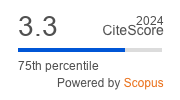Article | Open Access
| Ahead of Print | Last Modified: 13 November 2025
Materialising Digital Borderscapes: Examining the Effects of Digital Systems on Asylum Seekers and Refugees
| Views: | 223 | | | Downloads: | 176 |
Abstract: Digitalisation is increasingly adopted in the public sector in South Africa. The country’s Department of Home Affairs has a significant digitalisation project that aims to improve its efficiency in service delivery. Despite this project, it was the Covid‐19 pandemic that saw the introduction of a digital interface to manage the bureaucracy of asylum seeker and refugee administration. This article examines the impacts of this asylum seeker and refugee permit extension online system. The article traces how the online system works to refigure how asylum seekers access the state and the possibility of securing documentation. We demonstrate that this online system has effects far greater than simply improved efficiency; instead, it fundamentally refigures the borderscapes navigated by asylum seekers and refugees. Here, digitalisation shifts bureaucratic responsibility to the asylum seekers and refugees, and in so doing, distances them from the state. We show this by paying attention to how the online system changes the materialities of asylum seeking; the spaces in which protection is sought; as well as the practices thereof, where actors other than the state are called on for assistance. In the world of technological interventions, this online system for permit renewal is a seemingly mundane example of digitalisation; yet its effects on the possibilities for social, legal, and even economic inclusion of asylum seekers and refugees are significant.
Keywords: borderscapes; bureaucracy; digital mundane; digitalisation; migration; South Africa
Published:
Ahead of Print
Issue:
Vol 14 (2026): Digitalization and Migration: Rethinking Socio-Economic Inclusions and Exclusions (In Progress)
© Saskia Greyling, Corey R. Johnson. This is an open access article distributed under the terms of the Creative Commons Attribution 4.0 license (http://creativecommons.org/licenses/by/4.0), which permits any use, distribution, and reproduction of the work without further permission provided the original author(s) and source are credited.


